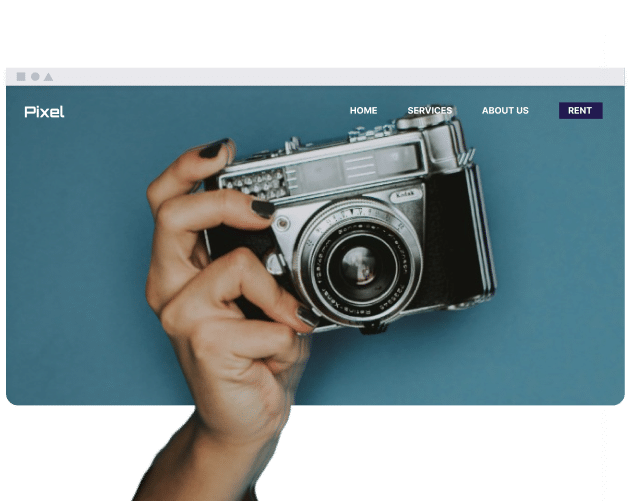What is the difference between Web Content and Website Copy?
Web content is a comprehensive term that covers all information on a website (from the blog posts and articles to pictures and videos), mainly intended to inform, entertain, or educate. On the other hand, website copy is a specific type of content with a clear marketing objective, such as lead generation. The difference lies in the fact that all website copy is a form of web content, but not every web content is website copy. You write a copy to persuade, and content to inform.
What are the different types of Website Copy?
Website copy comes in various forms, each with its own unique purpose.
· Homepage copy: This is the first impression of your brand, informing your value proposition to your audience. It provides an overview of the key sections of your site.
· Product/Service page copy: These pages detail your products/services with a focus on how the features can help solve the customer’s problems rather than simply enumerating the features of a product or service.
· The “About Us” page copy: It presents the company’s background, values, and mission, impacting perceptions of brand reliability and dedication.
· Landing page copy: This page is designed to accomplish a special marketing campaign. Its goal is either to capture more leads or to make more sales.
· Call-to-Action (CTA) copy: These are brief and action-focused phrases on buttons or links that suggest the user to “Buy Now,” “Sign Up,” “Download,” or other actions.
How can I write practical Website Copy?
Writing practical website copy is about knowing who you are writing to and making your message clear.
• Understanding the audience: Acknowledge their challenges and inquiries to align your message with their requirements.
• Employ simple language: Avoid technical terms or excessively complex sentence structures. Your message should be easy to understand for everyone.
• Write for scannability: By using headings, subheadings, and bullet points, you divide a text into parts, thus making it easy for people to skim through and get the points they need.
What are some common mistakes to avoid when writing Website Copy?
Addressing typical errors that may diminish your message and alienate readers could be important for writing engaging copy. Moreover, readers want to see how you can be of help to them, rather than just hearing about the awesomeness of your company.
• The audience’s understanding of the recommended next step may be influenced by the presence of a Call-to-Action (CTA), potentially impacting conversions. Every significant page needs a clear purpose.
• Spelling, grammar, and typography errors, which proofreading seeks to minimize, may have a connection with perceptions of brand image and customer trust. Always check your copy by reading it aloud and getting another person’s opinion.
• Customers buy products that solve their problems. Describing how the product might assist customers may be perceived differently from simply stating the product’s features.
What is a Call-to-Action (CTA)?
A CTA is a prompt that guides users on “what to do next.” It is often a clickable button or a hyperlinked phrase designed to guide the user towards a specific conversion goal. The CTA is a crucial element of website copy because it bridges the gap between passive interest and active engagement, thus impacting the performance of your website. The clarity of a CTA could influence a visitor’s comprehension of the suggested action and their subsequent engagement level.
Pros and cons of strong CTAs
| + | – |
| Guides user behavior. It presents specific directions for visitors. | Relevance is contingent upon its noticeability and attractiveness. |
| Conversion rates experience changes. The visibility and perceived attractiveness of the subsequent action could be a factor. | The quantity of CTAs is potentially linked to user understanding, as pages with a significant number of items may require additional processing for viewers. |
| User-friendliness considerations: Focuses on facilitating user access to a desired endpoint. | The impact of unclear CTAs can be reduced due to users’ desire for explicit information about the “click’s” outcome. |
Conclusion
Website writing quality correlates to the rate at which casual visitors become customers. Focusing on your audience’s needs must be at the heart of your approach, use simple language, and motivate them through a strong Call-to-Action. In this case, the website provides information and may relate to the business outcomes.

